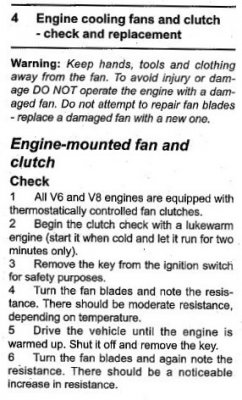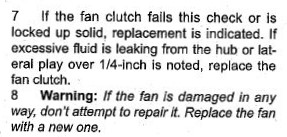https://www.rockauto.com/en/moreinfo.php?pk=668589&cc=1380372&jsn=2376
Unless you have a C42 RPO Code
https://www.rockauto.com/en/moreinfo.php?pk=1028578&cc=1380372&jsn=2375
This should be all the info you will ever need about fan clutches:
When you think of an automotive cooling system, the first thing that likely comes to mind is your radiator…or
maybe your cooling fan. The oft-overlooked
fan clutch doesn’t get a ton of credit or attention, but it’s an essential piece of the cooling equation in many vehicles. It helps your cooling system operate effectively and your engine operate efficiently.
But let’s start at the beginning.
What is a Fan Clutch?
A fan clutch is a temperature-controlled coupling between the water pump shaft and the fan which allows the fan to be operational at low speeds and disconnected at higher speeds. This allows the engine to operate more efficiently by removing the load that the fan places on it.
So how does it work?
It really depends on the style of fan clutch you choose.
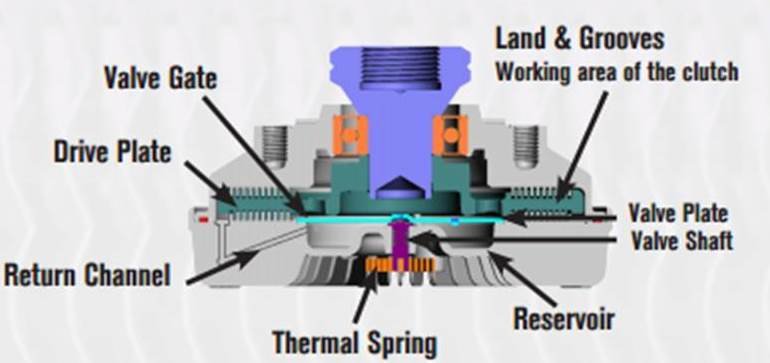 Types of Fan Clutches
Types of Fan Clutches
The main types are non-thermal, thermal, and electronic — all of which use a silicone fluid to engage and disengage your fan.
Non-Thermal Fan Clutches
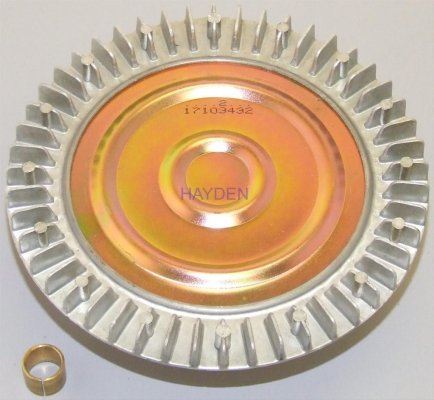
Non-thermal clutches operate solely based on the shaft speed of the water pump. At low and idling speeds, the clutch allows the fan blade to turn at almost a 1:1 ratio. At high speeds, the silicone fluid within in the clutch will lose its ability to transfer the energy from the shaft to the fan clutch body (and therefore, the fan) and the fan is then allowed to almost free-wheel, removing its load from the engine.
A non-thermal clutch provides a steady flow of cooling air but is always engaged, so it offers lower fuel savings than a thermal-style fan clutch. However, non-thermal clutches are a lower-cost option than thermal-style clutches.
Thermal Fan Clutches
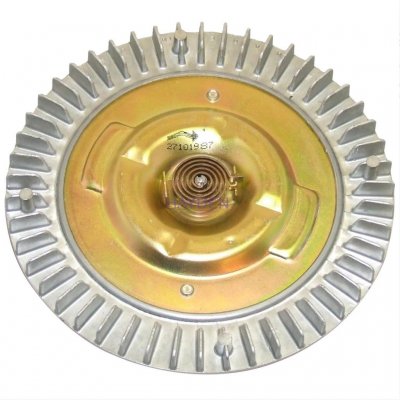
The thermal fan clutch operates in response to underhood temperatures. As hot air blows across the radiator, it heats a thermal spring mounted at the front of the clutch. As the spring is heated, it turns and allows valve ports to open within the clutch. Silicone fluid stored inside a reservoir is allowed to pass through these open ports and enter the working area of the clutch. This engages the clutch and drives the fan. Once the engine is cooled down, the thermal spring rotates back and closes the valve ports, disengaging the fan.
The speed at which a thermal fan clutch spins a fan depends largely on the exact fan you choose. On the
Summit Racing website, for example, you’ll find three different types of thermal fan clutches from
Hayden alone:
Standard-Duty Thermal Fan Clutch: This design turns the fan at 60-70 percent of the water pump shaft speed when engaged, and 20-30 percent when disengaged. It’s made for fans with a lighter pitch.
Heavy-Duty Thermal Fan Clutch: This fan style turns the fan at 70-90 percent of the shaft speed when engaged for increased cooling. When disengaged, it turns the fan at 25-35 percent. It’s used with deeper-pitch fans (2 1/2″ of pitch), and works well with higher operating rpm.
Severe-Duty Thermal Fan Clutch: Severe duty thermal fans turn the fan at 80-90 percent of the shaft speed when engaged and 20-30 percent when disengaged. It’s used with deeper pitch fans and has a larger working surface to provide cooler running and longer life expectancy.
Electronic – Viscous EV Fan Clutch Operation
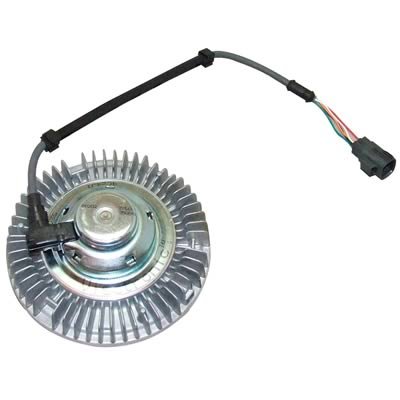
This style of fan clutch operates like a thermal clutch, but the ECM/PCM signal controls the level of engagement of the EV clutch. This engagement process is ultimately controlled through the ECM/PCM by the following input variables: Coolant Temperature, Intake Manifold Temperature, Transmission Oil Temperature, A/C Pressure and Engine Oil Temperature. These variables are manufacturer-specific and fan speed is dictated based on the level of cooling required.
Like all components, fan clutches will wear out and need replaced.
Signs of Worn Fan Clutch
According to Hayden, here are some signs your fan clutch might need replaced:
- Fan spins excessively when engine is stopped (three or more times when hot engine is shut off).
- Poor A/C performance at idle or low vehicle speeds.
- Fan speed does not increase when engine is hot.
- Fan speed does not increase until engine is excessively hot.
- Fan blade tip moves more than 1/4-inch front to back.
- Fan turns roughly or does not turn at all.
- Excessive fan noise at all speeds due to failed bearing.
- Vibration that increases with engine speed.
- Leaking fluid or oily build up around the bearing or thermal spring.
These problems are often caused by a bad bearing, which may be seized or have excessive play, or by a worn or loose thermal spring.
Armed with this information, you can identify a bad fan clutch and replace it with the proper aftermarket option.





